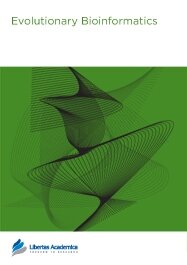

Publication Date: 26 May 2008
Journal: Evolutionary Bioinformatics
Citation: Evolutionary Bioinformatics 2008:4 193-201
doi: 10.4137/EBO.S653

1Department of Plant and Environmental Sciences, University of Gothenburg, Box 461, 405 30 Göteborg, Sweden. 2Mathematical Statistics, Chalmers University of Technology/Department of Zoology, University of Gothenburg, 412 96 Göteborg, Sweden.
Abstract
The internal transcribed spacer (ITS) region of the nuclear ribosomal repeat unit is the most popular locus for species identification and subgeneric phylogenetic inference in sequence-based mycological research. The region is known to show certain variability even within species, although its intraspecific variability is often held to be limited and clearly separated from interspecific variability. The existence of such a divide between intra- and interspecific variability is implicitly assumed by automated approaches to species identification, but whether intraspecific variability indeed is negligible within the fungal kingdom remains contentious. The present study estimates the intraspecific ITS variability in all fungi presently available to the mycological community through the international sequence databases. Substantial differences were found within the kingdom, and the results are not easily correlated to the taxonomic affiliation or nutritional mode of the taxa considered. No single unifying yet stringent upper limit for intraspecific variability, such as the canonical 3% threshold, appears to be applicable with the desired outcome throughout the fungi. Our results caution against simplified approaches to automated ITS-based species delimitation and reiterate the need for taxonomic expertise in the translation of sequence data into species names.
PDF (735.81 KB PDF FORMAT)
RIS citation (ENDNOTE, REFERENCE MANAGER, PROCITE, REFWORKS)
BibTex citation (BIBDESK, LATEX)
XML
PMC HTML

The team at Evolutionary Bioinformatics were fantastic in everyway. They were very accessible and helped with all aspects of getting the paper published in a timely fashion. The immediate online help option available through the website is a great option.
Facebook Google+ Twitter
Pinterest Tumblr YouTube